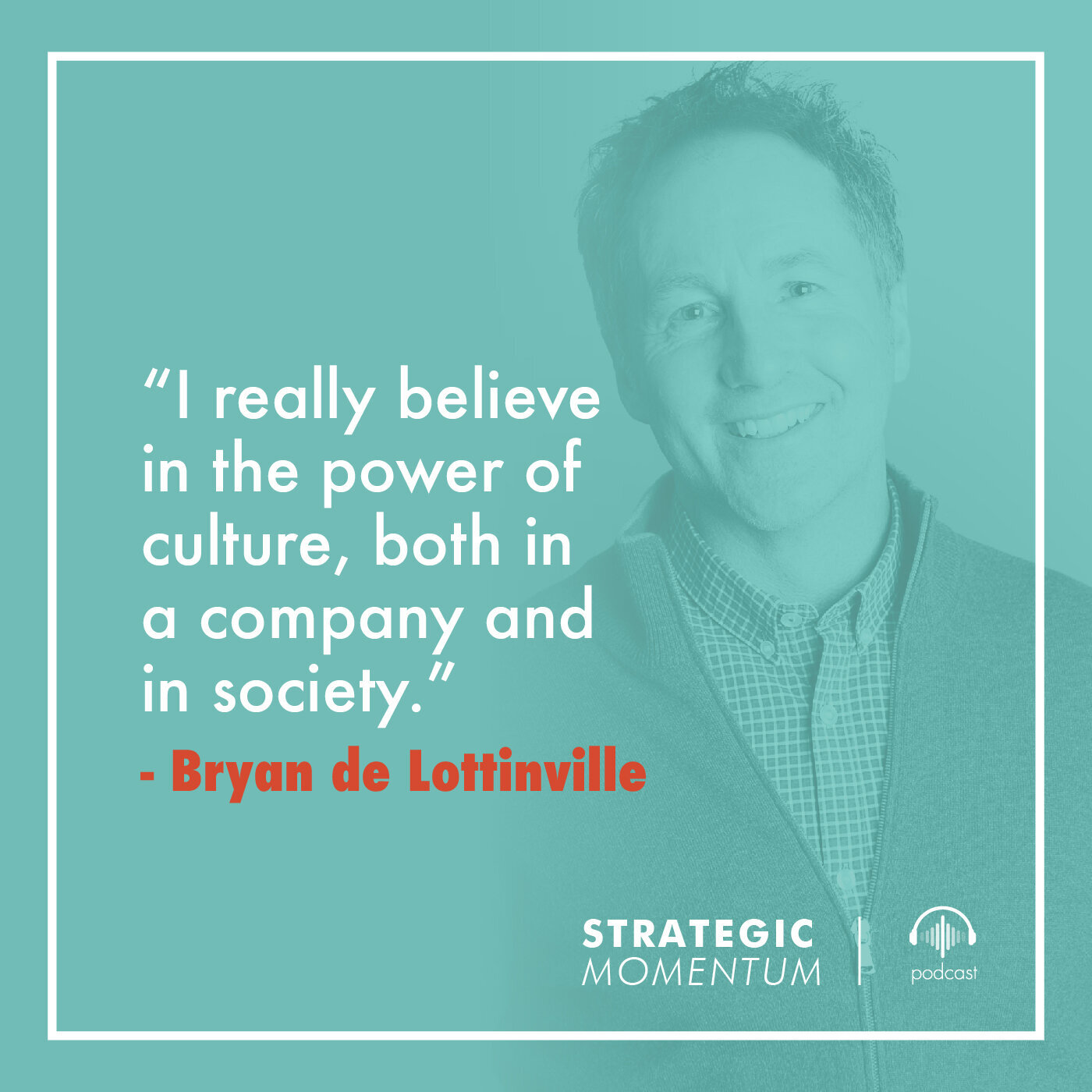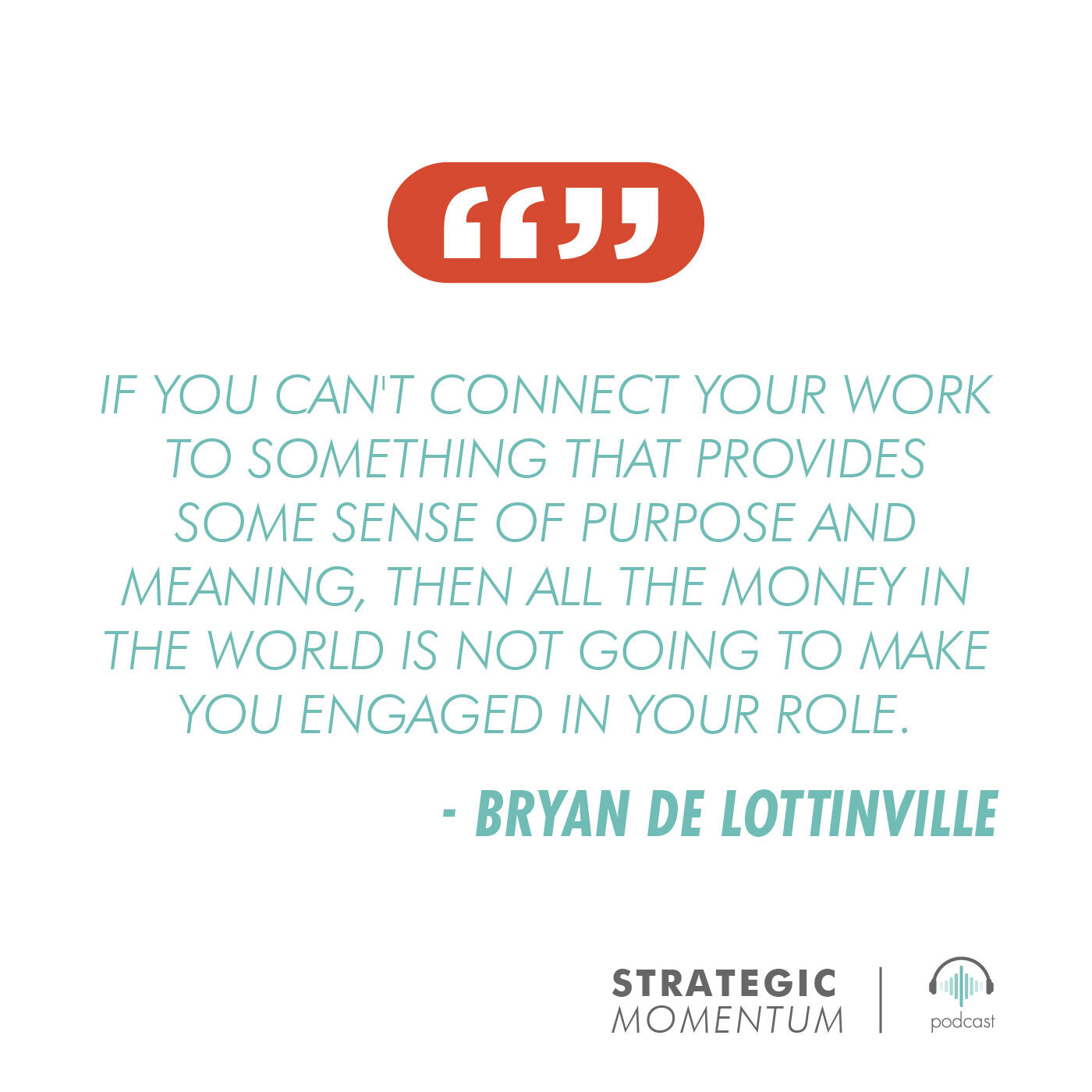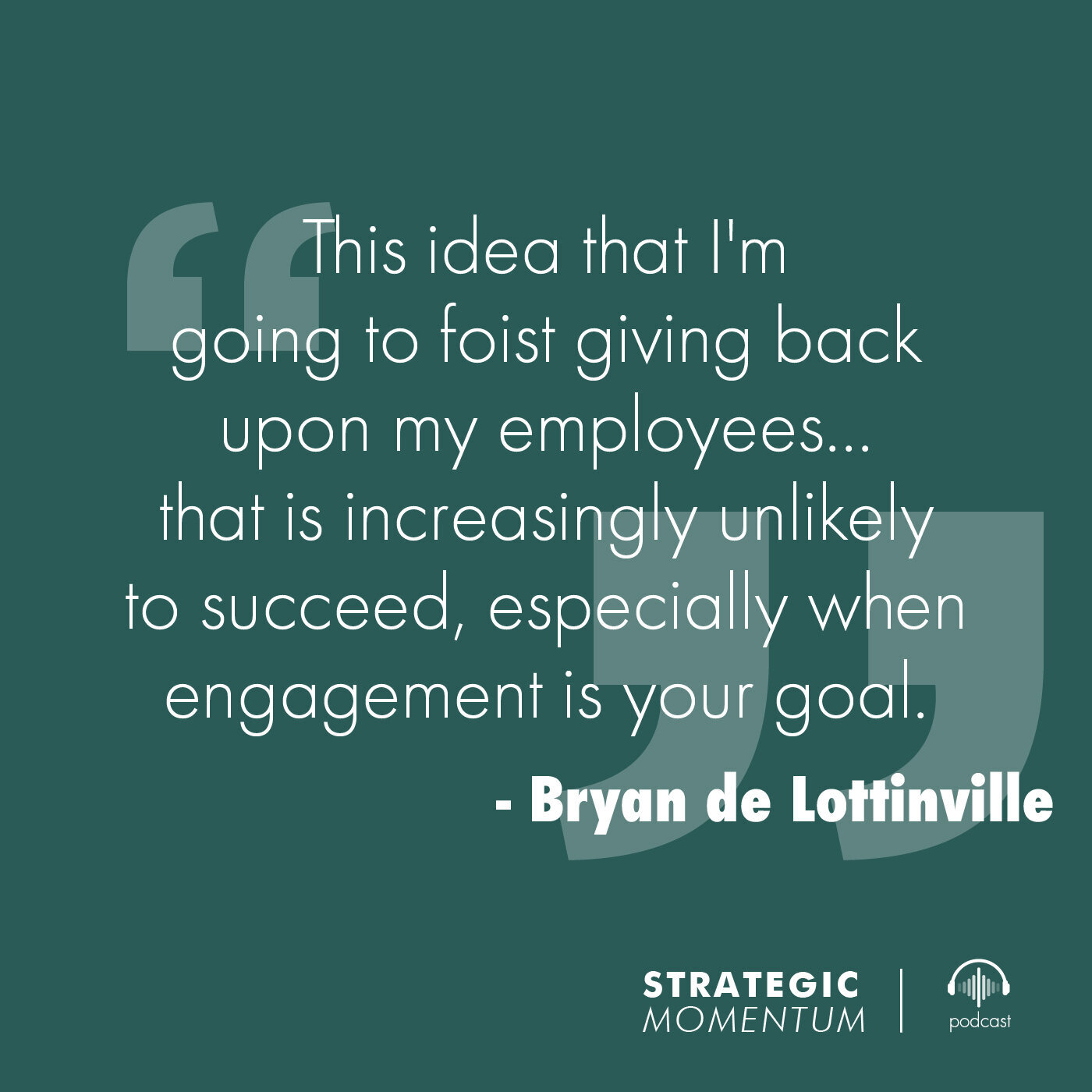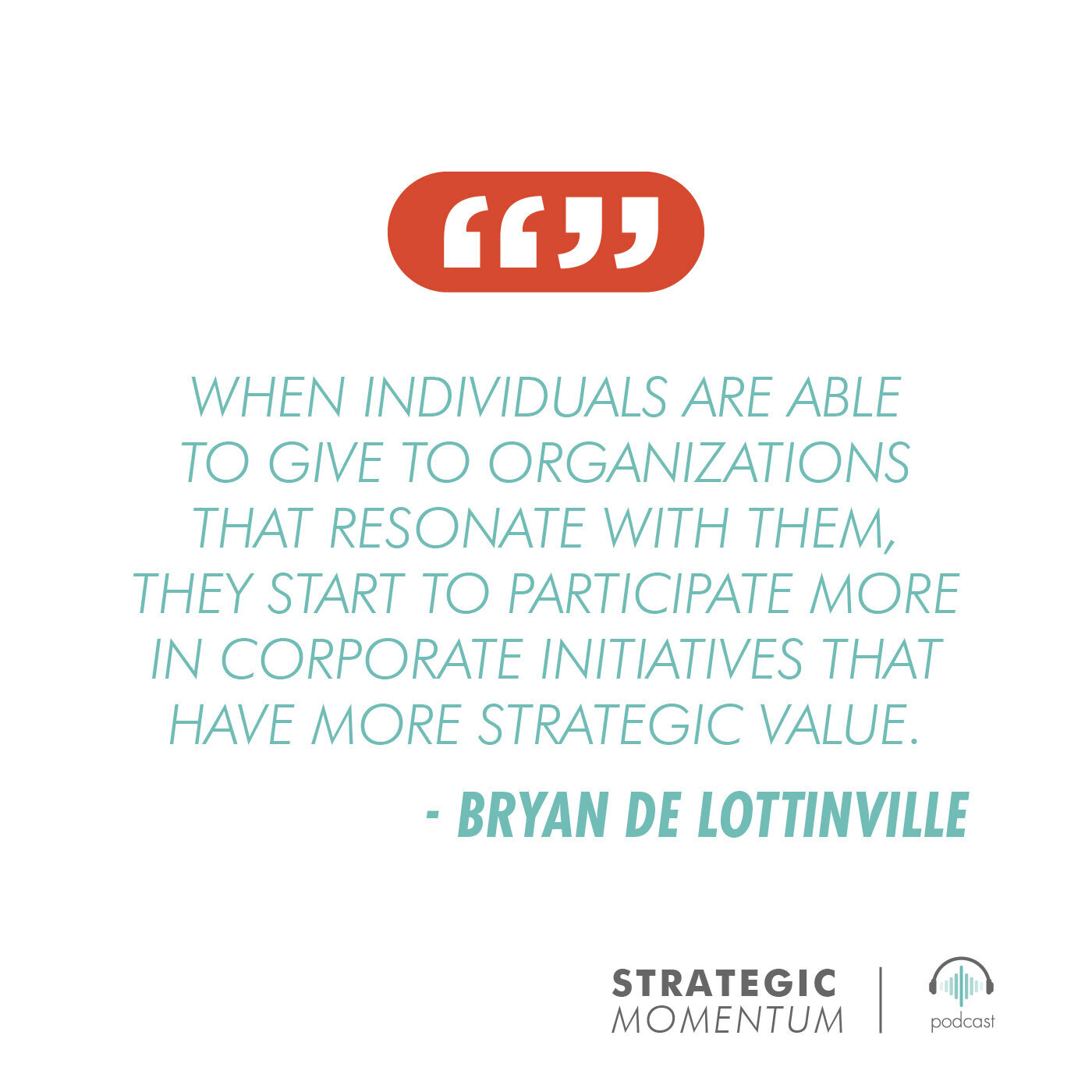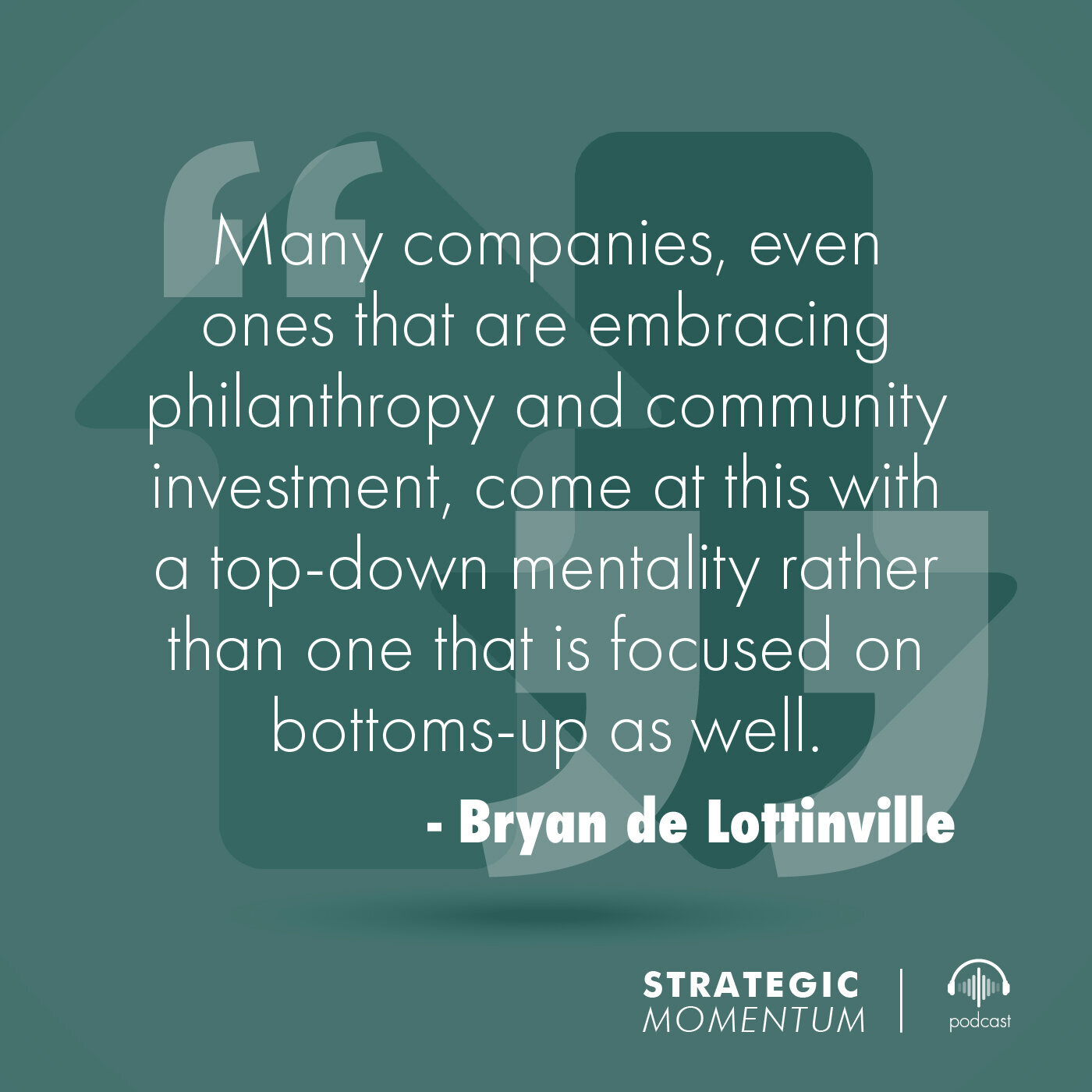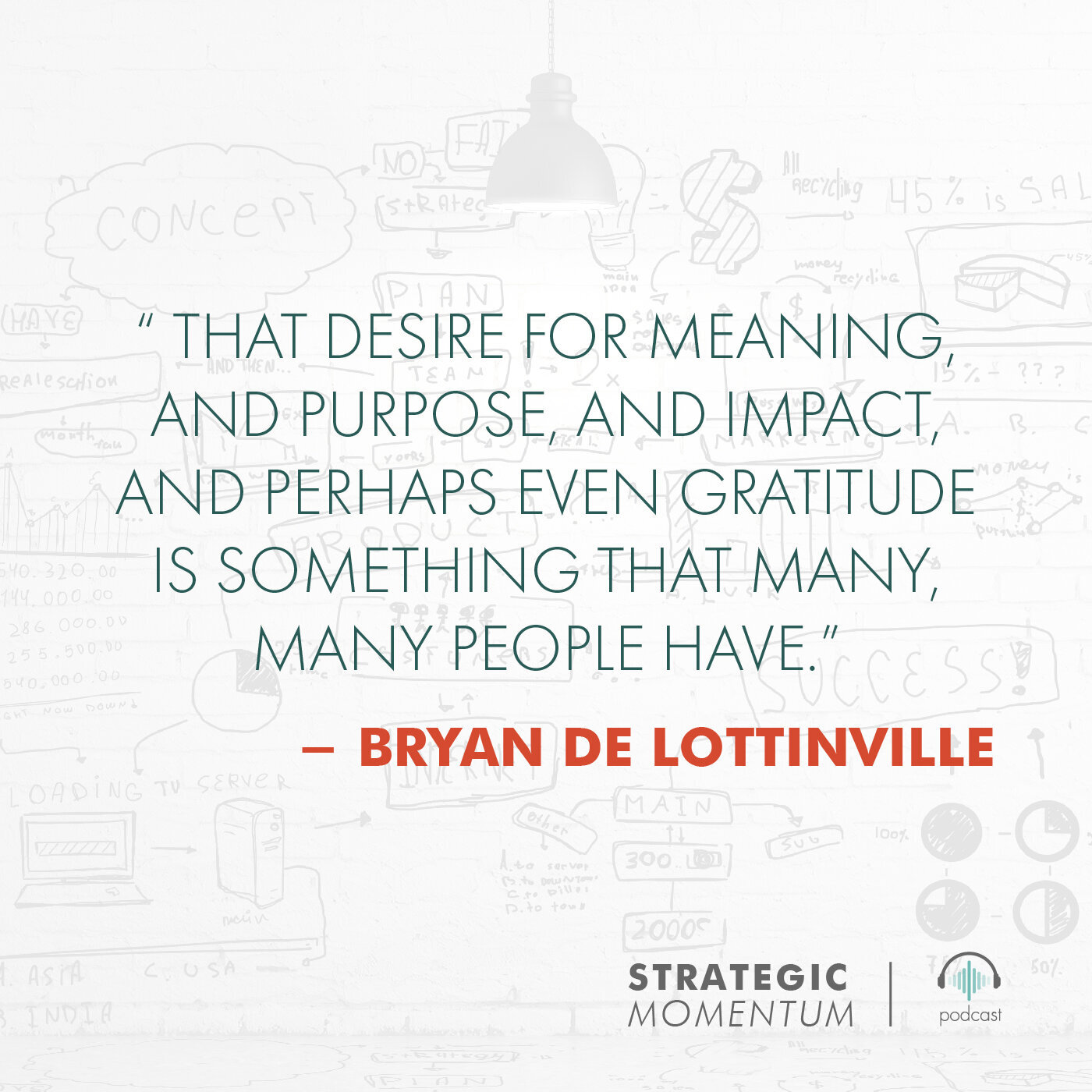Ep. 61 - Aligning Personal and Corporate Purpose: Redefining Philanthropy Through the Power of Small Actions - with Bryan de Lottinville
Find Us Wherever You Listen To Podcasts
While many have this desire for greater meaning, purpose and impact, the “how” isn’t always aligned with their own “why.”
The traditional approach to charitable giving and corporate philanthropy programs is often times limited and narrow. As a result, it doesn’t enable individuals in an organization to truly fulfill their personal “goodness” goals, nor does it allow for a company to tap into their employees passion to support a higher order purpose. So how do companies tap into that innate need they have while also translating that into something bigger?
Bryan de Lottinville, Founder and CEO of Benevity, is a self-described “recovering lawyer” who found his higher purpose by changing the way companies can do well by doing good. And that involves harnessing the power of individuals and the small actions they collectively take.
In this episode Bryan shares:
What led him to make that career pivot and start his goodness platform.
The challenges with the existing model around charitable giving and corporate philanthropy.
The importance of shifting the why around giving and corporate social responsibility to be sustainable and personal.
The benefit of enabling the power of one to create that ongoing iterative contribution, which can now be done through technology
Pivoting Towards Purpose
While Bryan started his career as a lawyer, he transitioned to an operational role with a company that was disrupting the interior construction business. It was there where he got his real world MBA, as he was involved in significantly growing the business from 300 employees to 2500 and taking them through an IPO, in addition to eventually selling it to a large US company - all over a six year period.
This was “a great way for a lawyer to become a business person,” as Bryan likes to tell it. That eventually led him to running one of the first multi-sided platform businesses called iStockphoto. This business also shifted fundamental norms in its industry and was eventually purchased by Getty Images.
The next phase of career was triggered by a question from his young daughter about what he did for a living. The realization that it had been focused on fixing up companies and selling them for as much as he could caused him to reflect on what he wanted his professional legacy to be. So he started to ask himself how he could better align his actions with his intentions.
Having grown up poor, Bryan always had an appetite to give back and to provide some way to inspire others. And after being exposed to the charitable giving landscape and investing in a startup focused on doing good, he saw limitations in these organizations’ approaches — and this ultimately created constraints in terms of them achieving their social missions.
Based on his past roles, Bryan inherently understood the power of technology and the network effect to change fundamental behavioral and business dynamics. And he saw the opportunity to do just that in the charitable giving and corporate philanthropy landscape.
All of this knowledge empowered him to pursue a venture that would align his desire “to leave the world a little better than I found it” with his business-building expertise, and he believed that better integrating business and social impact would lead to mutually beneficial outcomes.
That venture, of course, became Benevity.
Challenges with Corporate Giving - Mindset, Timing and Manual Approach
Fundraising is typically a very top-down, once-a-year exercise that focuses more on hitting targets than creating a culture of goodness or sense of shared purpose in an organization. And this ‘top down’ mindset limits the success of any corporate social responsibility/corporate giving program, particularly with the millennial workforce as they expect to have choice and a voice.
Bryan also believes that companies have been mostly pursuing a handout mentality when it comes to corporate social responsibility and corporate giving, as opposed to an investment opportunity mentality.
Further, the manual and archaic nature of the donation process (which is still predominantly checks) ends up being costly. With the distribution side of the equation also being inefficient, it doesn’t lend itself to an optimal user experience.
Redefining, Reshaping and Retooling from the Bottom Up
There can be incredible opportunity and benefits in integrating business goals with a social mission. By changing the how and marrying it with the higher order why, companies can now tap into this innate desire that many employees have for greater meaning, purpose, and impact.
And that higher order why should be about engaging employees in causes that resonate with them personally in ways that could translate into them becoming more invested in that social mission in an ongoing fashion.
For Bryan and Benevity, it starts at the individual level and subsequently leveraging the power of small actions to generate big change through their technology platform. And one aspect of their goodness platform is to aggregate, automate, and help with efficiency on the distribution side of the ecosystem.
And as a result of their software, this change also has a domino effect on both the behavior of the individual and the company, leading to greater business investment in corporate giving a more engaged workforce and sustained culture of goodness.
Purpose and Profit can’t be mutually exclusive, but by leveraging the power of one, companies can create impact and sustainable success, while building a positive corporate culture.
Bryan’s Career Advice
If you can't connect your work to something that provides some sense of this real kind of purpose and meaning, then all the money in the world is not going to make you engaged in your role.
Don't let anyone but the very best version of yourself decide what you're capable of.
Make sure that you have the humility to grow and be self-aware enough to keep a growth mindset in all that you do.
Key Takeaways
The need for meaning, purpose, impact, and even gratitude is something that everyone has, but companies are not investing efficiently in these desires because of time-constraints, outdated practices, and a misunderstanding of the ‘how’ and ‘higher order why.’
Take a more inclusive approach to doing well by doing good by engaging people from a bottom up perspective vs. a top down perspective - it’s all about the power of one.
This allows individuals to make small but meaningful impact, causes a shift from historically passive transactional interactions to richer, experiential investments — ones that are personal, sustainable, and become behavioral.
Forcing the notion on employees to give back to a handful of charities is increasingly unlikely to succeed, especially when engagement is your goal.
This will not work with millennials who are increasingly going to be the largest cohort in the workforce. They are far more engaged in social consciousness and want to be active and interactive.
There can’t and should not be a one-size-fits-all approach to corporate giving or corporate social responsibility.
To bring more people into the tent requires taking a user-centric approach.
When individuals are able to give to organizations that resonate with them, they start to participate more in the corporate initiatives that might have more strategic value to companies.
Offering empowerment and choice creates a tighter relationship to the employer which in turn can lead to a tremendous opportunity to increase social outcomes in ways that authentically improve the business.
To create a culture of goodness, focus on enabling sustainable behavior vs. a singular task. That involves shifting from this push mentality to more of a pull mentality.
Establishing that culture of goodness does result in positive benefits for the company and having that right corporate culture is increasingly relevant in attracting, retaining and engaging people.
Resources:
Request a Demo of Benevity
Benevity Website
Benevity Twitter
Subscribe to the Strategic Momentum podcast:
Find us on Social Media:
FACEBOOK: Strategic Momentum Podcast
INSTAGRAM: @strategicmomentum
TWITTER: @flywheelassoc
LINKEDIN: Flywheel Associates
YOUTUBE: Flywheel Associates
PINTEREST: Flywheel Associates








